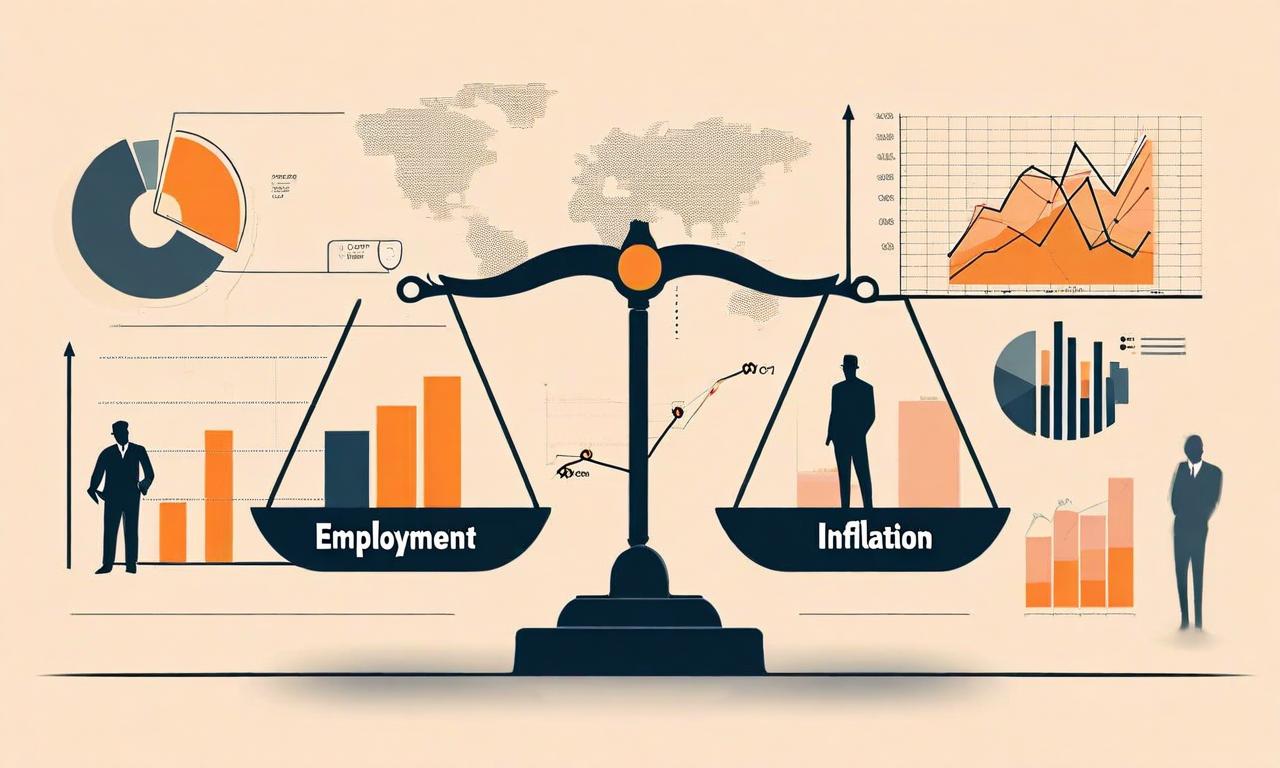Markets Surge as Powell Signals Potential Policy Shift at Jackson Hole
Federal Reserve Chair Jerome Powell's remarks at the Jackson Hole economic symposium triggered a significant market rally, with the S&P 500 heading for its largest gain since May. Powell emphasized the delicate balance between employment and inflation under the Fed's dual mandate. The current policy rate stands at 4.25% to 4.50%, with Powell noting increasing risks to employment. He highlighted slower GDP growth and consumer spending in the first half of the year. Powell stressed that monetary policy is not preset, hinting at possible rate adjustments while advocating for a cautious approach. The speech led to a sharp decline in Treasury yields and positive market reaction, as investors interpreted it as a signal of potential easing in monetary policy.

*this image is generated using AI for illustrative purposes only.
Federal Reserve Chair Jerome Powell's remarks at the Jackson Hole economic symposium sparked a significant market rally, with the S&P 500 poised for its largest gain since May. Powell's speech, which hinted at possible adjustments to monetary policy, also led to a sharp decline in Treasury yields.
Balancing Act: Employment and Inflation
Powell emphasized the delicate balance the Fed must maintain under its dual mandate. Despite low unemployment figures, recent labor market data has shown signs of weakness. Simultaneously, inflation remains slightly above the Fed's 2% target, complicating the central bank's decision-making process.
Current Policy Stance
The Federal Reserve's policy rate currently stands at 4.25% to 4.50%. Powell noted that the risks to employment are increasing, warning that deterioration in the job market can occur rapidly through higher layoffs.
Economic Growth and Consumer Spending
Powell highlighted that GDP growth in the first half of the year was approximately half of the previous year's pace, partly due to slower consumer spending. This slowdown in economic activity adds another layer of complexity to the Fed's policy considerations.
Tariffs and Inflation
While acknowledging concerns about the impact of tariffs on inflation, Powell appeared to favor looking through such price level changes, suggesting a more long-term view of inflationary pressures.
Dissent Within the Fed
The July Fed meeting saw two dissents from governors for the first time since 1992, indicating some disagreement within the central bank about the appropriate course of action.
Future Policy Direction
Powell stressed that monetary policy is not on a preset course, suggesting that rate adjustments could potentially begin soon. However, he emphasized the need for a cautious approach, given the complex economic landscape.
Market Reaction
The markets responded positively to Powell's speech, interpreting his comments as a signal that the Fed might be open to easing its monetary policy stance. This optimism drove the S&P 500 towards its biggest single-day gain since May, while simultaneously causing Treasury yields to tumble.
As investors digest Powell's remarks, all eyes will be on upcoming economic data and the Fed's next moves, which could have significant implications for both the financial markets and the broader economy.

























